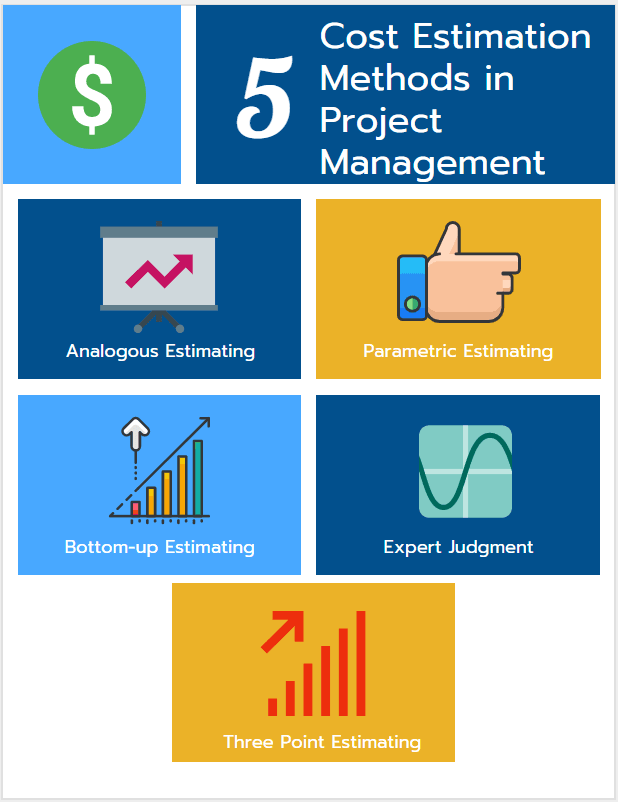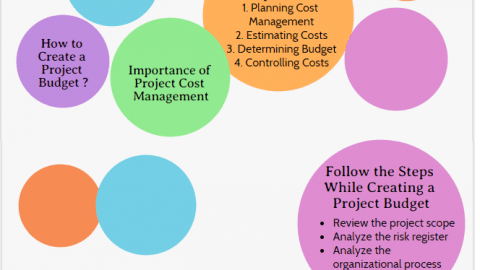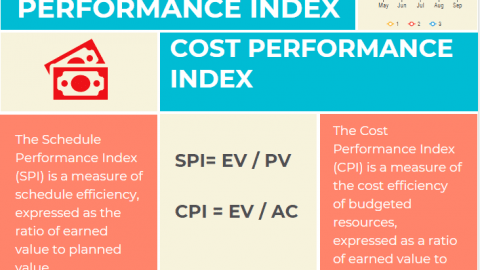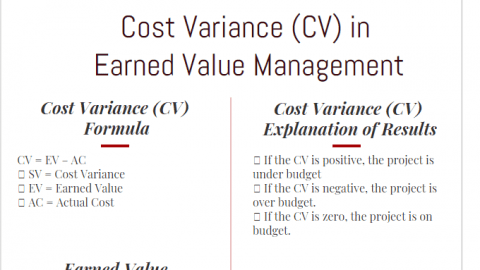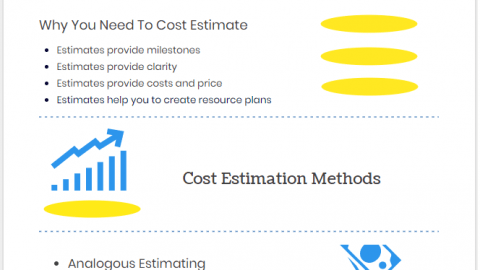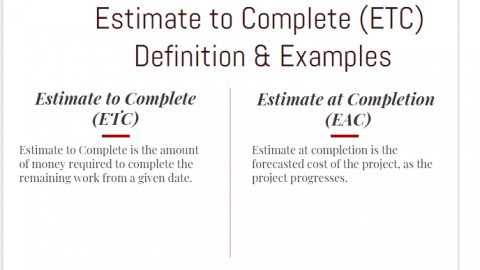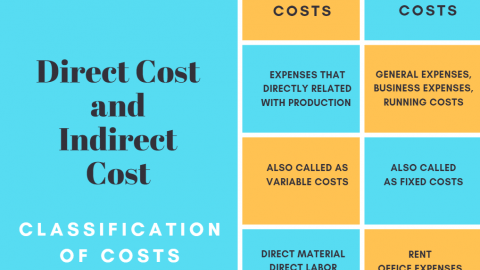Cost Estimation Methods and Tools in Project Management
Estimate costs process in project management is the practice of estimation of the monetary resources required to complete tasks and project activities. This process uses almost the same tools used in the estimate activity duration process such as expert judgment, analogous estimating, three-point estimating. But the difference is that, you make forecasts for the costs (not for the durations) of each activity in estimate costs process. In this article, we will discuss 5 cost estimation tools and methods in project management.
Table of Contents
Cost Estimation Process
Estimate Costs is the process of determining costs of each activity including material costs, equipment costs, labor costs, sub-contractor costs as well as determining the indirect costs.
Project managers must be experienced in project cost management tools and techniques in order to create accurate budgets manage costs variances for their projects. Obviously, underestimation of costs and resources makes a contribution to the project failure. Cost estimation is a repetitious process of establishing an approximation of the monetary resources required to complete project activities either physical or non physical.
For this purpose, there are several tools and techniques recommended by the Project Management Institute (PMI) in the estimate cost process of the Project Cost Management expertise area.
Now we’ll analyze 5 tools to estimate costs in project management.
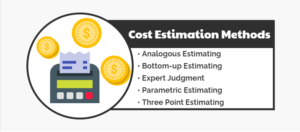
What are the Cost Estimation Methods & Tools?
Below are the common methods;
• Analogous Estimating
• Bottom-up Estimating
• Expert Judgment
• Parametric Estimating
• Three Point Estimating
Now let’s discuss each project cost estimation method in detail.
Analogous Estimating
Analogous estimating analyzes a similar project completed in the past and makes a rough estimation for the current project by the use of this past project’s data. This technique does not provide a certain estimation because it is used when there is little information regarding the current project and it is limited to the project manager’s and cost engineer’s experience.
Analogous Estimation Technique which is also known as the top-down estimating technique can be considered as a consolidation of historical information and expert judgment.
Simply put, the analogous estimation provides quick results. However, it does not often provide a definite estimation.
Bottom-up Estimating
Bottom-up estimating is the process of estimating every single activity and rolling them up into an overall project estimate. As a result using bottom-up estimating from a single activity level, the overall project estimate can be more realistic and accurate.
Simply put, in this technique, all the project scope is divided into smaller work packages and the cost of each work package is estimated one by one. The project’s total cost is the sum of all work packages and components costs.
Although it is a time consuming and costly technique, it provides the most accurate estimation. Therefore it is one of the most common project cost estimation tools and methods.
Expert Judgement
Expert Judgment is a widely used cost estimation technique because of its simplicity. It is based on historical records like the analogous estimating .
Expert Judgment can be provided by a member or multiple members of the project management team. Also, stakeholders, customers, technical organizations and professionals can provide their knowledge.
Parametric Estimating
Like the expert judgment and analogous estimation technique, parametric estimation also uses historical records to estimate project costs. It analyzes similar projects and uses their historical data for the new project.
For instance, you will estimate the cost of a formwork activity in a construction project. In order to make a parametric estimation, you will analyze a past project and get the man-hours for each unit. Then you will estimate the total man-hour for the new project’s formwork activity by using the past project’s performance and multiply it by the unit price.
Parametric Estimation Technique can be considered as a consolidation of historical information and statical data. It is a definite technique to identify both cost and time for a current project using data from past projects with duplicate parameters.
Three Point Estimating
Three Point Estimating Technique is a useful technique which helps to increase the accuracy of cost and time estimates. There are three parts of this technique which provide three different estimates.
• Most Likely Estimate: Assuming a normal case in which everything goes as usual.
• Pessimistic Estimate: Assuming everything goes wrong.
• Optimistic Estimate: Assuming everything goes as planned.
PERT Method (Program Evaluation and Review Technique) uses the three-point estimation technique to determine the activity durations within a project.
As it is mentioned in the second paragraph there are several tools and methods and technics for cost estimation and it is important to determine which method is suitable for your cost estimation purpose.
Keystones of Cost Estimation Methods
- Although Analogous Estimation and Expert Judgement are the fastest techniques, they provide less accurate results. Therefore they can be used when there is little information regarding the project.
- Parametric Estimation uses both historical records and statistical records to estimate costs. It provides more accurate results than the analogous estimation and expert judgment.
- The three-point estimation uses three estimates which are optimistic, pessimistic and most likely to calculate the average costs. It provides more accurate results than the analogous estimation, expert judgment, and parametric estimation.
- Bottom-up estimation analyzes each work package from the lowest level to the uppermost level. Although it is time-consuming, it provides the most accurate estimation.
Summary
Estimate costs is one of the most important processes in project management. Expert judgment, analogous estimation, three-point estimation, parametric estimation, and bottom-up estimation are the techniques used in this process. Choosing the most suitable technique depends on the availability of project information and time. For example, you can use analogous estimation when there is little information for the project. On the other hand, you can use the bottom-up estimation if the project information is adequate.
There are also additional cost estimation tools methods for example Reserve Analysis, Cost of Quality, Vendor Analysis. Reserve analysis is a useful tool to determine the amount of contingency reserve to be added to the project budget. Cost of Quality focuses on the funds spent during the project to prevent failures and funds spent during and after the project because of the failures. Vendor Analysis method is a cost estimation technique relies on the bids collected by vendors for the total cost of the project.
Further Reading
Project management cost estimate
See Also

Vice President, İntelligent Design & Consultancy Ltd
Over 12 years of global & rich experience in Portfolio & Program Delivery Management in leading & managing IT Governance, PMO, IT Portfolio/Program, IT Products, IT service delivery management, Budget Management, and more.

